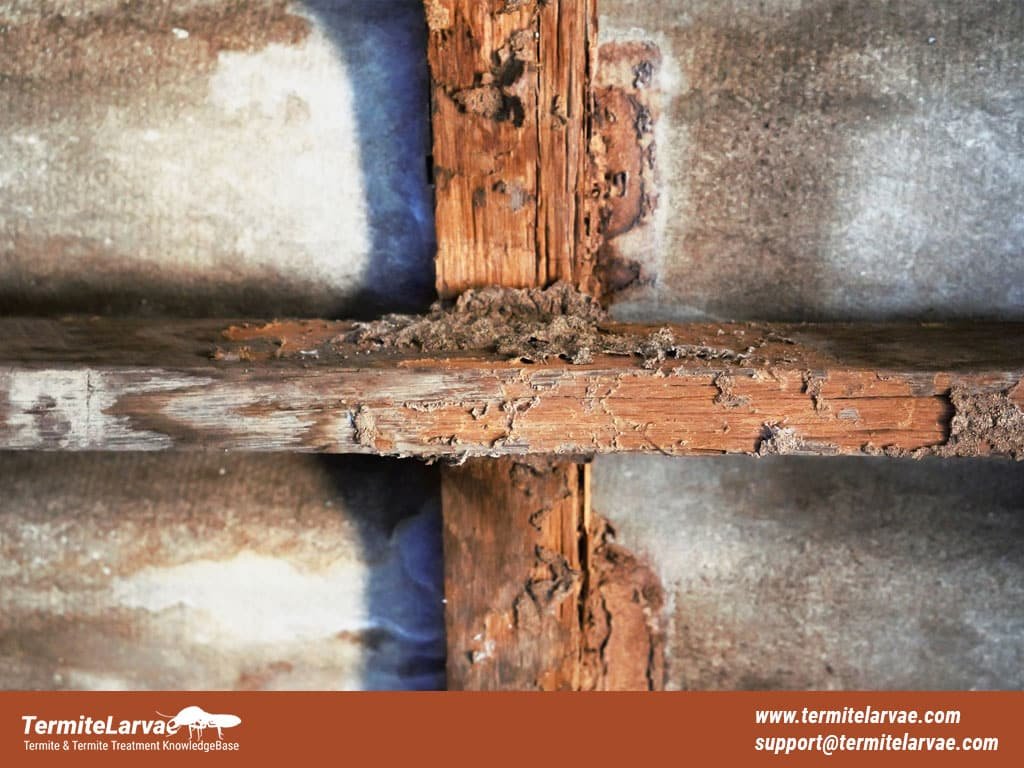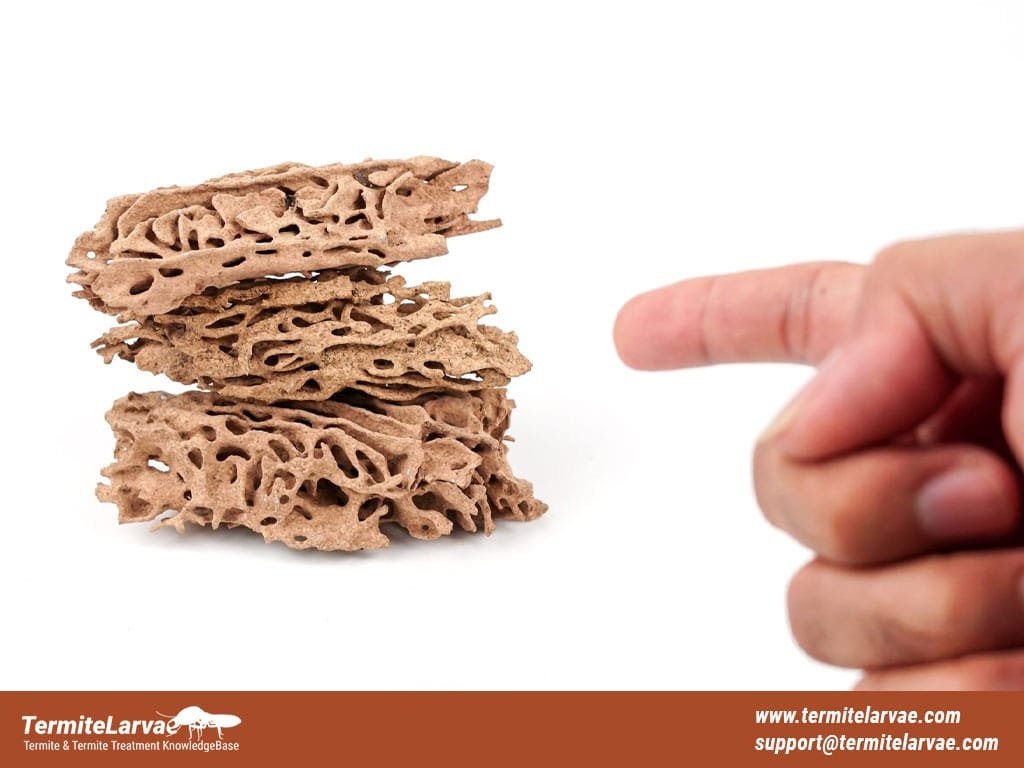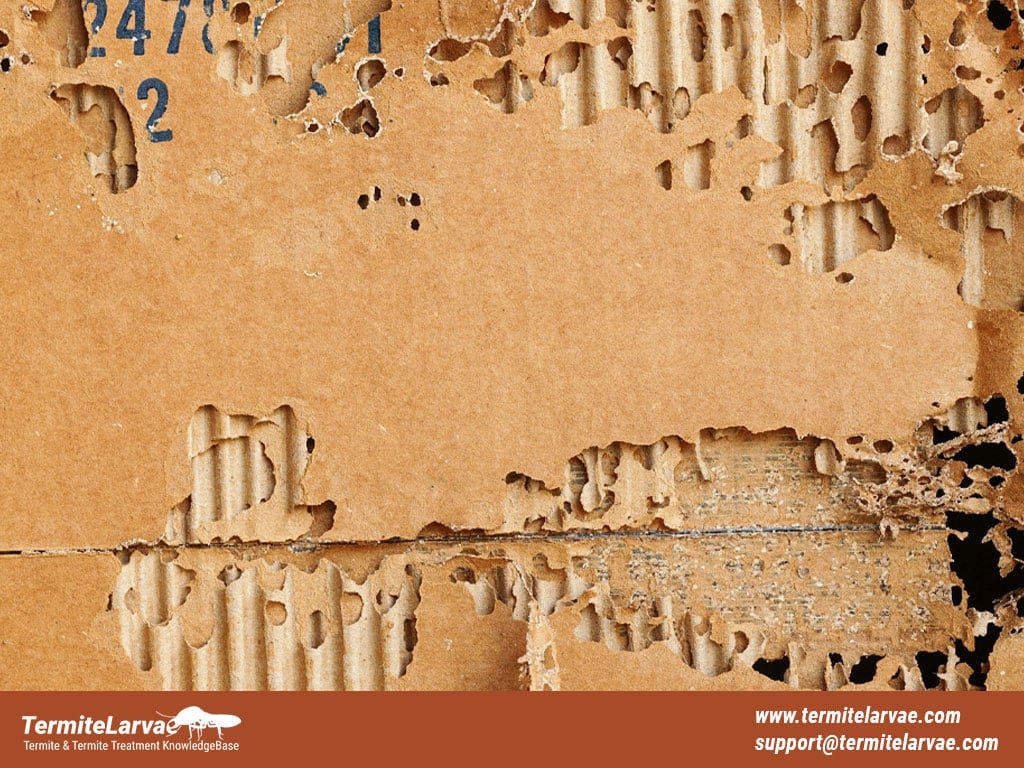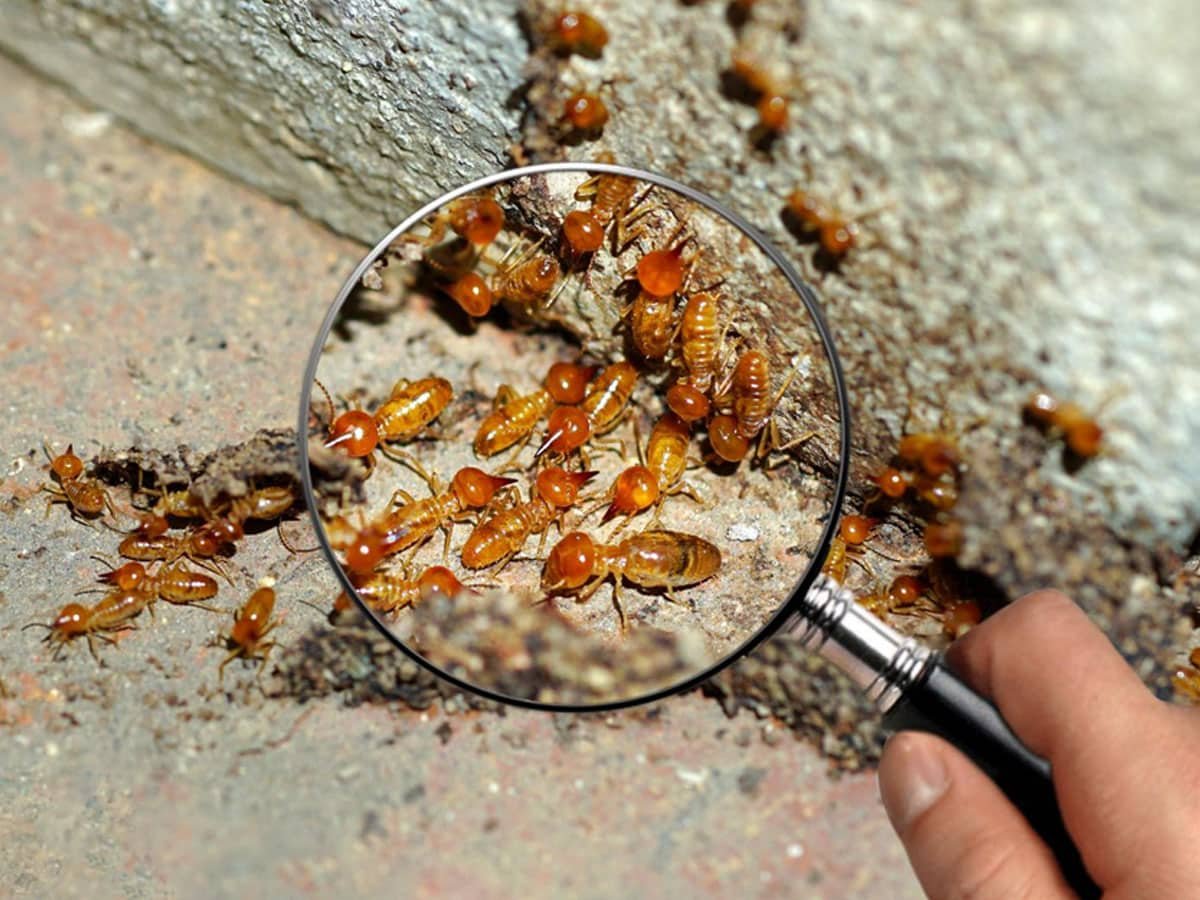Termites, though small in size, can cause substantial damage to your home if left unnoticed. Early detection is crucial to prevent escalating repair costs. This article serves as a comprehensive guide on how to look for termite damage, helping you identify the tell-tale signs before it’s too late.
Whether you are a homeowner looking to safeguard your investment or someone dealing with a potential infestation, read on to arm yourself with the essential knowledge to tackle termite troubles head-on.
Understanding Termite Infestation:
Termites are a homeowner’s unseen foe, often working in the shadows to degrade the structural integrity of homes. Understanding the behavior and signs of termite infestations is the first step in combating this common household pest.
There are primarily two types of termites that cause concern – Subterranean and Drywood termites.
Subterranean Termites:
Subterranean termites live underground in colonies. They are known for building distinctive “mud tubes” to provide moisture while they travel between their colony and food source.
The primary diet of these termites is cellulose, which is found in wood. Due to their underground lifestyle, they are often hard to detect until significant damage has occurred.
Drywood Termites:
Contrarily, Drywood termites live within the wood they consume, making their detection slightly easier. They don’t require soil contact and can infest any wooden structure or furniture. Their frass, or droppings, often visible around infested areas, are a common sign of their presence.
Identifying the type of termite you are dealing with can significantly impact the approach you take to address the infestation. While professional inspection is always recommended, being informed about termite behaviors and signs can provide a head start in protecting your home.
Common Signs of Termite Damage:
Detecting termite damage early can save homeowners a considerable amount of time, effort, and money. Here are some common signs of termite damage that you should be on the lookout for:
Mud Tubes:
Subterranean termites construct mud tubes, which are about the width of a pencil, to travel between their food source and their colony. These tubes protect them from predators and conserve moisture, which is crucial for their survival.
Hollow Sounding Wood:
Termites consume wood from the inside out, leaving a thin veneer of wood or paint. If you tap or knock on an area that has termite damage, it will sound hollow or papery due to the part of the wood having been eaten away.
Discolored or Blistering Wood:
Subterranean termites can cause wood to discolor or blister. If you notice any blistering or discoloration of wooden structures in your home, it’s wise to investigate further for termite activity.
Termite Droppings (Frass):
Drywood termites leave behind their droppings, also known as frass, which resemble small, granular pellets. Finding frass near wooden structures is a tell-tale sign of a termite infestation.
Visible Termites or Termite Wings:
Termites often swarm in the spring and fall. Finding discarded wings or actual termites around your home is a clear indication of a termite infestation.
Understanding and identifying these signs can be the key to early detection of termite activity, which is crucial in minimizing the damage to your property. However, distinguishing termite damage from other types of wood damage is equally important, which we will cover in the following section.
Distinguishing Termite Damage from Other Wood Damages:
Wood, being a natural and porous material, is susceptible to various forms of damage. While termites are a common culprit, other factors like water exposure and other insect activity can also cause deterioration. Here’s how you can distinguish termite damage from other common wood damage:
Termite Damage vs Water Damage:
Water damage often causes wood to swell and discolor. It may also result in the wood becoming soft or creating a “spongy” feel when pressed. On the other hand, termite damage typically appears in the form of hollowed-out wood, leaving behind a thin layer of wood or veneer. The presence of mud tubes and frass are distinctive signs of termite activity, which are not associated with water damage.
Termite Damage vs Wood Rot:
Wood rot is a fungal decay that causes the wood to become soft, brittle, and discolored. Unlike termite damage, wood rot does not result in the presence of mud tubes or frass. Furthermore, while termites leave behind a pattern of channels and cavities within the wood, wood rot causes the wood to crack and crumble, often creating a “cubical” pattern of damage.
Termite Damage vs Other Insect Damage:
Other insects like carpenter ants also cause damage to wood. However, unlike termites, carpenter ants do not consume wood but rather excavate it to create nests. Their excavations are smooth and have a sandpapered appearance, unlike the rough and ragged appearance of termite damage.
Understanding the differences between termite damage and other types of wood damage is crucial for accurate identification and subsequent treatment. If you’re unsure about the type of wood damage you’re encountering, consulting with a pest control professional is always a wise decision.
Steps to Identify Termite Damage:
Identifying termite damage early can be a lifesaver for your home and pocket. Here’s a step-by-step guide on how you can inspect your home for termite damage:
Step 1: Visual Inspection
Inspect Exposed Wood: Look for hollowed or damaged wood around your home. Pay special attention to the basement, attics, and areas with wood in direct contact with the soil.
Look for Mud Tubes: Check the foundation and crawl spaces for mud tubes, as they are a significant indication of subterranean termite activity.
Check for Discarded Wings: Termite swarmers discard their wings near windows, doors, and other entry points.
Step 2: Physical Inspection
Tap on the Wood: Use a screwdriver or similar tool to tap on the wood. Hollow sounds or a papery feel are indicative of termite damage.
Probe the Wood: Gently probe suspected areas with a screwdriver to check for soft spots or crumbling.
Step 3: Professional Inspection
Schedule a Professional Inspection: If you suspect a termite infestation, it’s advisable to get a professional inspection for an accurate assessment and treatment recommendations.
Step 4: Maintain a Regular Inspection Schedule
Bi-annual Inspections: Conduct a thorough inspection of your home at least twice a year. Regular inspections can help catch termite activity early, minimizing potential damage.
Each home is unique, and termite infestations can manifest in different ways. While these steps provide a general guide, professional pest control services offer the expertise and tools to ensure an accurate diagnosis of termite activity.
Dealing with Termite Damage:
Discovering termite damage can be unsettling, but timely action can mitigate further destruction and restore the integrity of your home. Here’s how you can deal with termite damage:
Professional Termite Treatment:
Engaging professional pest control services is the most effective way to deal with termite infestations. Experts have the knowledge, experience, and tools to accurately identify the extent of the damage and prescribe the appropriate treatment plan. Treatment options may include soil treatments, bait systems, or even fumigation, depending on the severity of the infestation.
Repairing Termite Damage:
Once the termites have been eradicated, repairing the damaged areas is the next step. This may involve replacing damaged wood or reinforcing affected structures with new wood or metal supports. It’s advisable to consult with a contractor who has experience in repairing termite damage to ensure the repairs are durable and meet local building codes.
Preventive Measures:
Prevention is always better than cure. Here are some preventive measures to ward off future termite infestations:
- Moisture Control: Termites are attracted to moisture. Fix leaks and ensure proper ventilation to keep areas dry.
- Regular Inspections: Schedule regular professional inspections to catch any termite activity early.
- Chemical Barriers: Applying chemical barriers in the soil around your home can help keep subterranean termites at bay.
- Physical Barriers: Install physical barriers like metal or crushed rock beneath the soil to prevent termites from reaching your home.
The battle against termite damage is ongoing. While professional intervention is crucial, homeowners also play a significant role in maintaining a termite-free environment through preventive measures and regular inspections.
Preventing Future Termite Infestations:
Maintaining a termite-free environment post-treatment is crucial to safeguard your home against future infestations. Here are some preventive measures to consider:
Soil Treatment:
Applying termiticide to the soil creates a chemical barrier that deters subterranean termites from invading your property. It’s advisable to have a professional pest control service perform this treatment to ensure effectiveness and safety.
Wood Treatment:
Treat the wood in your home with borate-based products to deter termites. This treatment penetrates the wood and provides long-term protection against termites and other wood-destroying insects.
Moisture Control:
Eliminate excess moisture in and around your home, as it’s a significant attractant for termites. Repair leaky faucets and pipes, ensure proper drainage, and use dehumidifiers in damp areas.
Physical Barriers:
Installing physical barriers like basalt or sand barriers can deter termites. These barriers are designed to be too dense for termites to penetrate, effectively blocking their path into your home.
Regular Inspections:
Maintain a schedule of regular professional inspections to catch any signs of termite activity early. Early detection is key to preventing extensive damage.
Prompt Treatment:
At the first sign of termite activity, seek professional treatment. Prompt action can prevent a minor termite problem from escalating into a full-blown infestation.
Preventing termite infestations requires a combination of chemical, physical, and cultural control methods. By taking a proactive approach, you can significantly reduce the risk of termite infestations and ensure the longevity and safety of your home.
Final Thought:
Termite damage can be a daunting challenge for homeowners, but with adequate knowledge and a proactive approach, it’s a manageable issue. Understanding the signs of termite infestation, employing professional inspections and treatments, and adopting preventive measures are crucial steps in protecting your home from these destructive pests.
The journey towards a termite-free home begins with awareness and is fortified by action. Take the initiative to safeguard your home against termites, ensuring a safe and secure abode for years to come.
Frequently Asked Questions
How often should I get a termite inspection?
It’s advisable to have a professional termite inspection at least once a year or more frequently if you’ve had past termite issues or live in a termite-prone area.
How to repair termite damage?
Repairing termite damage may involve removing and replacing damaged wood or reinforcing affected areas with new wood or metal supports. It’s best to consult with a professional contractor experienced in termite damage repair.
Is termite damage covered under homeowners’ insurance?
Termite damage is often not covered by homeowners’ insurance as it’s considered preventable through regular maintenance. It’s advisable to check your policy details or consult with your insurance provider.
Can termite damage lead to serious structural issues?
Yes, untreated termite damage can lead to severe structural issues in your home, making it unsafe. Early detection and treatment are crucial to prevent significant damage.
What are some effective termite control methods?
Effective termite control methods include soil and wood treatments, physical barriers, moisture control, and regular professional inspections. Each situation may require a different approach, so consulting with a pest control professional is advisable.











